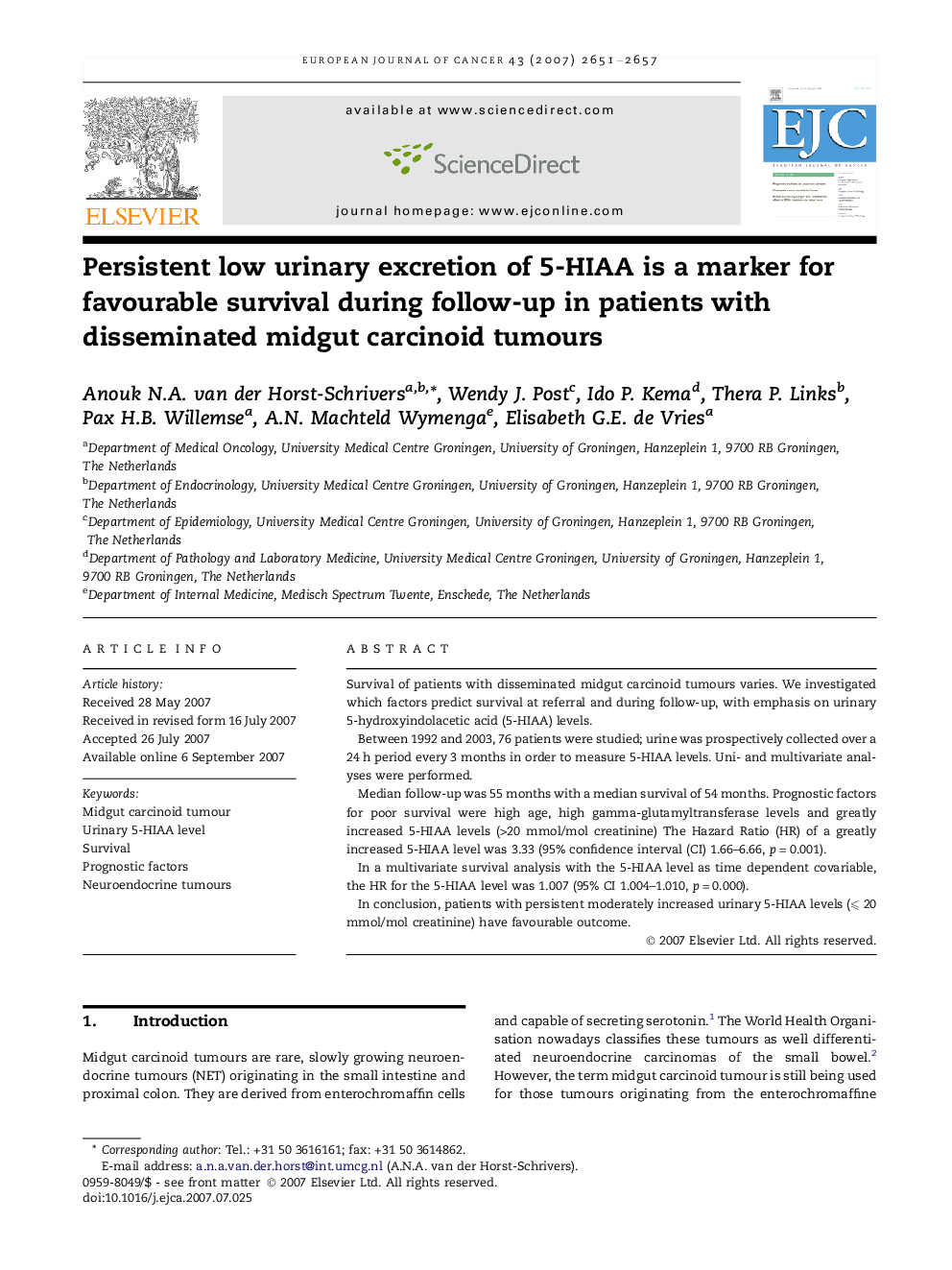| Article ID | Journal | Published Year | Pages | File Type |
|---|---|---|---|---|
| 2124500 | European Journal of Cancer | 2007 | 7 Pages |
Survival of patients with disseminated midgut carcinoid tumours varies. We investigated which factors predict survival at referral and during follow-up, with emphasis on urinary 5-hydroxyindolacetic acid (5-HIAA) levels.Between 1992 and 2003, 76 patients were studied; urine was prospectively collected over a 24 h period every 3 months in order to measure 5-HIAA levels. Uni- and multivariate analyses were performed.Median follow-up was 55 months with a median survival of 54 months. Prognostic factors for poor survival were high age, high gamma-glutamyltransferase levels and greatly increased 5-HIAA levels (>20 mmol/mol creatinine) The Hazard Ratio (HR) of a greatly increased 5-HIAA level was 3.33 (95% confidence interval (CI) 1.66–6.66, p = 0.001).In a multivariate survival analysis with the 5-HIAA level as time dependent covariable, the HR for the 5-HIAA level was 1.007 (95% CI 1.004–1.010, p = 0.000).In conclusion, patients with persistent moderately increased urinary 5-HIAA levels (⩽ 20 mmol/mol creatinine) have favourable outcome.
